Richard Brown was one of the leading lights of the railway - an old-school leader who learned his craft in the days of British Rail.
Over three decades, there are few parts of the industry in which he has not worked. He took Midland Mainline through privatisation, oversaw five franchises, and for many years ran Eurostar.
Richard Brown was one of the leading lights of the railway - an old-school leader who learned his craft in the days of British Rail.
Over three decades, there are few parts of the industry in which he has not worked. He took Midland Mainline through privatisation, oversaw five franchises, and for many years ran Eurostar.
Disenchanted with the rate of progress in reforming the industry, he has self-published a book setting out his views on how it should be done.
“I started wanting to write it a year or two after the Williams Review was commissioned,” he explains.
“I was getting so frustrated with the state of the industry, government indecision and, well, lack of attention.
“That merely grew. Williams wasn’t published for three years, and then nothing much happened until very recently.
“I’ve learned quite a lot over the years - how to do things and how not to do things. It would be a pity not to share it. There’s quite a concern about loss of corporate memory.”
Brown is now 72, so he is a contemporary of Rail Minister Lord Hendy. He says his advice is aimed at policy makers and at the next generation of leaders.
“The consultation document [for Great British Railways legislation] is really quite superficial. It’s full of ambition and fine words, but there’s very little in it. There’s no debate about exactly how you reintegrate track and train. That is lacking.
“It says the Secretary of State will write GBR’s strategy. To my mind, no organisation is really an organisation at all, unless it is responsible for producing its own strategy. Otherwise, it’s just an agency.
“The Great British Railways Transition Team was largely made up by civil servants and consultants, not practising railway managers.”
How would Richard Brown do it, if he were in charge?
“The train operators are the starting place. They are focused on identifiable markets, the routes and communities that they serve.
“What [Network Rail Chairman] Sir Andrew Haines has done - quietly preparing the ground without a remit to do it - is put in a number of routes underneath the Network Rail regions that very closely match the geography of train operators. That makes it relatively straightforward to put together the routes with the TOCs [train operating companies], which is already happening on Southeastern. It has become much easier to do.
“You can do that for probably about half the network. East and West Coast are more difficult. The aim should be for one managing director to be in charge of both the route and I’ve learned quite a lot over the years - how to do things and how not to do things. It would be a pity not to share it. There’s quite a concern about loss of corporate memory.
the services - and therefore able to make the sort of trade-offs that politicians have never fully understood, between spending money on the track or the trains to improve performance. There’s no one answer - it always depends on the circumstances of the particular route.
“Likewise, freeing up time to do maintenance and renewals in a way that damages the service as little as possible. That’s pretty much been stuck since privatisation, with Schedule 4 payments making it all quite difficult, and the Department for Transport not agreeing to changes to train service specification to accommodate cheaper, quicker maintenance and renewals.
“The frustration is that a lot of it could be done now, before GBR is a legal and financial entity.”
To be fair, that is exactly what the railway is already trying to achieve. South Western Railway and Network Rail’s Wessex region share a managing director with Lawrence Bowman, and Southeastern is about to do the same under Steve White. In Scotland, they’ve been doing it for years.
At the tail end of British Rail, Brown was involved in creating the administrative structure that was in place until it was broken up and privatised under the John Major government in the early 1990s.
It was known as Organising for Quality. Does this take the railway back to those final days of BR?
“The honest answer is probably yes. I’m pretty clear that the pre-privatisation organisation was the most effective.
“Obviously, the world has moved on - you can’t follow it precisely. But the broad principle is having one management team responsible for running track and train, responsible for bottom line and train service delivery, with strong leaders in a better position to challenge investment plans, costs and standards.
“Do we really need to follow every dictat from the ORR [Office of Rail and Road, the regulator] on safety? Is it the right thing to do for passengers? At the moment, they are very hard to challenge.”
So, if it was all better run under public sector British Rail, what have we learned in the intervening 30 years? What has improved?
“There have been benefits. The industry would not have grown passenger numbers by 150% before COVID, or in freight responded to the complete removal of coal.
“The private sector has a different approach to developing businesses. It looks outwards to the market and to customers for inspiration, whereas the public sector tends to look upwards, up the hierarchy, because that’s where budgets come from - not outwards to the customers.
“We got a lot better at marketing, at finding ways to attract more passengers and freight. We risk losing those skills. It’s no fun being in marketing in a TOC now, because you have no responsibility or budget.
“The private sector is much better at devolving responsibility to local managers. Having a manager overseen by a civil servant is just wasteful. It’s not much fun and it adds cost - we have seen how the costs of administration have gone up.”
Given that, where will the “difficult” bits of the industry fit into the new structure?
Freight will remain in the private sector, along with open access passenger services that the Labour government appears uncertain how to handle. And what of the rolling stock leasing companies?
“This is why you can’t just go back to pre-privatisation British Rail. Freight works best in the private sector, looking outward to customers.
“It would be a great mistake to let open access expand. How do open access operators add real value to the industry? If TOCs are well-run and properly empowered, they should be able to do as good a job as any open access operator.
“Lumo has a role, because it has focused principally on taking passengers off the airlines, and that additional brand probably does help the railway as a whole in the battle with airlines on the Anglo-Scottish routes. But open access will generally only have a marginal benefit at best.
“The train leasing companies - there can be no case for nationalising them. The three traditional leasing companies have learned how to collaborate with their customers. There will be friction, but it can be managed.”
But GBR will design the timetables, it will run the passenger services, and it will decide what space is available for freight and for open access. How, then, can those few parts of the operational railway still in the private sector go to the banks to borrow money to invest in new rolling stock or depots, when the banks can see no guarantee of track access to expand the market and recoup that investment?
“Clearly in the legislation setting up GBR, there needs to be protection for that - and probably through ORR.
“It needs to be a very different regulator from the one we have now, but it needs to be there. There is an ongoing role for ORR in overseeing relations with other bodies: Wales, Scotland… there’s probably greater friction there than between freight and passengers.”
Is the role of today’s leaders to put the railway Humpty Dumpty back together again? Is it to mimic BR by winding back the clock 30 years?
Many rail leaders believe more can be achieved by combining track and train than can be managed by a change in who holds the purse strings, given the tight confines of control by politicians and civil servants.
Brown states: “The first priority is to get the government out of day-to-day running of the railway.
“Having been on the board of the Department for Transport and on the board of Network Rail, I can see the government is increasingly involved in every little detail of running the service.
“I still chair the East Midlands route performance board, set up about six years ago because it was believed Network Rail and the train operators didn’t get on. Actually, they do get on, and they work together. But the structure gets in the way all the time.
“There are still plenty of good people. The difference is that it is harder for managers to move around and get broader experience. It is also harder for younger managers to move up the ladder fairly quickly.
“When I started, I had four different jobs in the first five years, so I was picking up experience. A lot of them now work in silos. Network Rail is very siloed. Lots of specialisms with people who don’t quite talk to each other in the way that is necessary or that they want to - their role is optimising their little bit.”
The substantial Rail Reform Bill will take at least a year to pass through Parliament, and it will likely be contested by Conservatives and Liberal Democrats.
It is already being said that GBR will not come into existence until 2027, by which time another General Election will be looming.
Can change really happen, or will the ‘holding pattern’ of railway management drag on? The government has more pressing problems to solve than the administrative reorganisation of one sector of the transport industry.
Brown notes: “You’re absolutely right - the industry itself has to come together. It has been in a holding pattern for years.
“If you leave it to the civil servants, it won’t happen because they actually quite like trying to run trains.
“But they’re only in each post for a very short time - two or three years before they move to another job in another Department.
“I’m sure they’re very bright people, but they don’t actually know what they’re doing when it comes to trying to direct an industry.
“An awful lot will depend on who the government appoints to lead GBR. The worry is whether whoever it is will have the vision, the drive and the experience to do it.
“The industry will need to earn the right to become an arm’s length organisation again, because government will not let go easily.
“Whitehall tends to centralise. The Treasury has to be helped to understand that the industry’s structure has driven up its costs. It ought to be persuadable that letting go, letting GBR strip out the layers and having small teams of accountable managers to run each route, would produce a better outcome for the Treasury, as well as for passengers and freight.”
There’s time to tackle another current debate. Given his long stint at Eurostar, how does Richard Brown view the interest from potential rival operators?
“When I was there, Deutsche Bahn announced they were coming to London. They brought a train to London. They brought their transport minister, who was met by our transport minister. Of course, it never happened. It was smoke and mirrors from DB, because the train they brought to St Pancras was towed. It didn’t come under its own power at all!
“Everyone said German railways were wonderful. Actually, they’re in a pretty big mess. But we were preparing ourselves for competition.
“It will damage Eurostar. The only way a new operator can succeed is to take passengers off Eurostar, because there isn’t a large untapped market there.”
But they all claim the opposite?
“No. Even when I left, Eurostar had 80% of the total rail-air market. And most of the remaining market was people interlining - flying to Paris to catch a long-haul Air France flight or heading to a long-haul British Airways flight.
“Even in that market, Eurostar picked up passengers through airlines that didn’t have their own London-Paris or London-Brussels service.
“And the classic ferry market is now absolutely tiny - hardly any foot passengers. Almost everyone is driving. There’s scope to get a few people out of their cars, but most car drivers are not going to Paris.”
If Brown were still running a bit of the railway today, what would he like to run?
“I always said Eurostar was the biggest challenge. I was never involved with Great Western, and I think that would be fun.
“There are untapped markets, particularly in the South West. They could be unlocked with a bit of flair, but they are not allowed to show it under the Department management contracts.
“There’s a lot to do there to tackle performance. Bringing track and train together there would be a chance to address that. Easy for me to say - I’m not going to do it!”
Who is Richard Brown CBE?
Richard Brown is probably best known as chief executive of Eurostar from 2002-10, and then its chairman until 2013. That period included overseeing the move from Waterloo International to St Pancras.
His career was previously in British Rail’s freight business.
He then worked on BR’s ‘Organising for Quality’ project which divided it into separate business units.
He led Midland Mainline under BR, staying through and beyond privatisation as the franchise was one of five won by National Express. He headed them all, later becoming the wider group’s commercial director.
He has also been chair of the Association of Train Operating Companies, president of the Chartered Institute of Logistics and Transport, and a board member of the Department for Transport, Network Rail and HS2.
In 2013 he published an independent review of the system of rail franchising, concluding that “in a well-functioning, good franchise system you sometimes have failure”, but that a number of faults in the system made failure more likely.
Login to continue reading
Or register with RAIL to keep up-to-date with the latest news, insight and opinion.

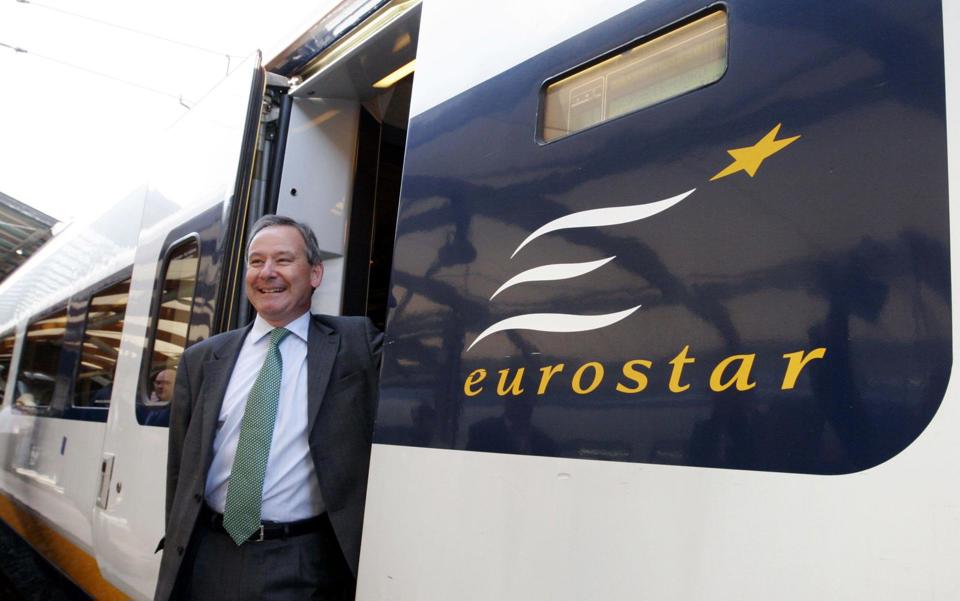

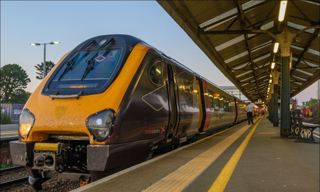
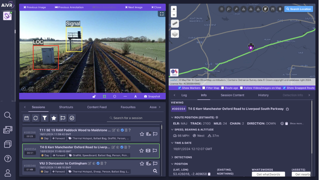
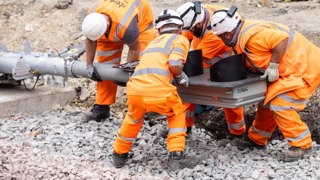
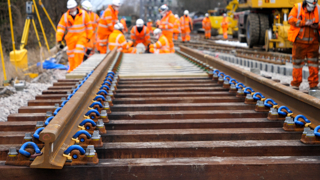










Login to comment
Comments
No comments have been made yet.